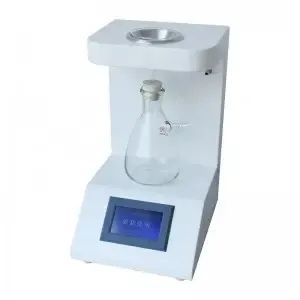TEL:
+86-0312-3189593
 English
English

Telephone:0312-3189593

Email:sales@oil-tester.com

-
 Afrikaans
Afrikaans -
 Albanian
Albanian -
 Amharic
Amharic -
 Arabic
Arabic -
 Armenian
Armenian -
 Azerbaijani
Azerbaijani -
 Basque
Basque -
 Belarusian
Belarusian -
 Bengali
Bengali -
 Bosnian
Bosnian -
 Bulgarian
Bulgarian -
 Catalan
Catalan -
 Cebuano
Cebuano -
 China
China -
 China (Taiwan)
China (Taiwan) -
 Corsican
Corsican -
 Croatian
Croatian -
 Czech
Czech -
 Danish
Danish -
 Dutch
Dutch -
 English
English -
 Esperanto
Esperanto -
 Estonian
Estonian -
 Finnish
Finnish -
 French
French -
 Frisian
Frisian -
 Galician
Galician -
 Georgian
Georgian -
 German
German -
 Greek
Greek -
 Gujarati
Gujarati -
 Haitian Creole
Haitian Creole -
 hausa
hausa -
 hawaiian
hawaiian -
 Hebrew
Hebrew -
 Hindi
Hindi -
 Miao
Miao -
 Hungarian
Hungarian -
 Icelandic
Icelandic -
 igbo
igbo -
 Indonesian
Indonesian -
 irish
irish -
 Italian
Italian -
 Japanese
Japanese -
 Javanese
Javanese -
 Kannada
Kannada -
 kazakh
kazakh -
 Khmer
Khmer -
 Rwandese
Rwandese -
 Korean
Korean -
 Kurdish
Kurdish -
 Kyrgyz
Kyrgyz -
 Lao
Lao -
 Latin
Latin -
 Latvian
Latvian -
 Lithuanian
Lithuanian -
 Luxembourgish
Luxembourgish -
 Macedonian
Macedonian -
 Malgashi
Malgashi -
 Malay
Malay -
 Malayalam
Malayalam -
 Maltese
Maltese -
 Maori
Maori -
 Marathi
Marathi -
 Mongolian
Mongolian -
 Myanmar
Myanmar -
 Nepali
Nepali -
 Norwegian
Norwegian -
 Norwegian
Norwegian -
 Occitan
Occitan -
 Pashto
Pashto -
 Persian
Persian -
 Polish
Polish -
 Portuguese
Portuguese -
 Punjabi
Punjabi -
 Romanian
Romanian -
 Russian
Russian -
 Samoan
Samoan -
 Scottish Gaelic
Scottish Gaelic -
 Serbian
Serbian -
 Sesotho
Sesotho -
 Shona
Shona -
 Sindhi
Sindhi -
 Sinhala
Sinhala -
 Slovak
Slovak -
 Slovenian
Slovenian -
 Somali
Somali -
 Spanish
Spanish -
 Sundanese
Sundanese -
 Swahili
Swahili -
 Swedish
Swedish -
 Tagalog
Tagalog -
 Tajik
Tajik -
 Tamil
Tamil -
 Tatar
Tatar -
 Telugu
Telugu -
 Thai
Thai -
 Turkish
Turkish -
 Turkmen
Turkmen -
 Ukrainian
Ukrainian -
 Urdu
Urdu -
 Uighur
Uighur -
 Uzbek
Uzbek -
 Vietnamese
Vietnamese -
 Welsh
Welsh -
 Bantu
Bantu -
 Yiddish
Yiddish -
 Yoruba
Yoruba -
 Zulu
Zulu
Jan . 13, 2025 13:56
Back to list
PUSH electrical astm d93 close cup flash point tester Silicon nitride ignition head
Crafting homemade distilling equipment is a nuanced art that combines creativity and expert knowledge. As enthusiasts delve into the world of DIY distillation, the importance of safety, precision craftsmanship, and understanding the underlying science cannot be overstated.
Expertise in this craft often comes from continuous learning and experience. Engaging with online communities or local home brewers' clubs can provide invaluable insights and feedback from others who share this passion. These communities not only empower individuals with shared knowledge but also foster innovation and perfection of techniques. An authoritative approach, coupled with hands-on experience, builds credibility and trustworthiness among fellow enthusiasts and consumers. Once initial equipment setup and trial runs are successful, documenting the process, including any modifications and the rationale behind them, can be hugely beneficial. This not only serves as a personal reference for future projects but also contributes to the wider community's understanding and refinement of DIY distillation techniques. Finally, ensuring compliance with local laws and regulations is non-negotiable. Countries have varying regulations regarding home distillation, primarily because of safety and regulatory concerns. Before undertaking any distillation projects, it's crucial to understand and adhere to these legal requirements to avoid potential fines or legal issues. The craft of making homemade distilling equipment is both rewarding and challenging, demanding a blend of science, safety, and artisanal skill. With the correct approach and resources, enthusiasts can create high-quality equipment that rivals commercially manufactured options, offering an enriching hobby that melds tradition with innovation.


Expertise in this craft often comes from continuous learning and experience. Engaging with online communities or local home brewers' clubs can provide invaluable insights and feedback from others who share this passion. These communities not only empower individuals with shared knowledge but also foster innovation and perfection of techniques. An authoritative approach, coupled with hands-on experience, builds credibility and trustworthiness among fellow enthusiasts and consumers. Once initial equipment setup and trial runs are successful, documenting the process, including any modifications and the rationale behind them, can be hugely beneficial. This not only serves as a personal reference for future projects but also contributes to the wider community's understanding and refinement of DIY distillation techniques. Finally, ensuring compliance with local laws and regulations is non-negotiable. Countries have varying regulations regarding home distillation, primarily because of safety and regulatory concerns. Before undertaking any distillation projects, it's crucial to understand and adhere to these legal requirements to avoid potential fines or legal issues. The craft of making homemade distilling equipment is both rewarding and challenging, demanding a blend of science, safety, and artisanal skill. With the correct approach and resources, enthusiasts can create high-quality equipment that rivals commercially manufactured options, offering an enriching hobby that melds tradition with innovation.
Previous:
Latest news
-
Exploring the Main Types of Industrial Endoscopes and Their Applications Across IndustriesNewsJul.04,2025
-
Testing Equipment Industry Sees Major Advancements in 2025: Smart & Precision Technologies Lead the WayNewsJun.06,2025
-
Applications of Direct Current Generators in Renewable Energy SystemsNewsJun.05,2025
-
Hipot Tester Calibration and Accuracy GuidelinesNewsJun.05,2025
-
Digital Circuit Breaker Analyzer Features and BenefitsNewsJun.05,2025
-
Benefits of Real-Time Power Quality Monitoring Devices for Industrial EfficiencyNewsJun.05,2025



